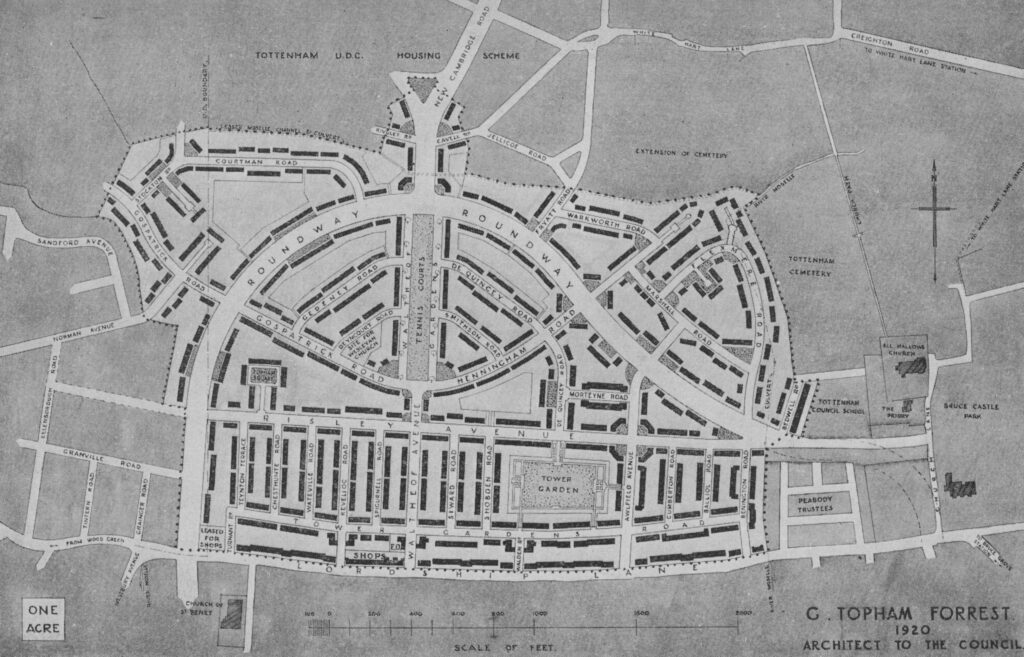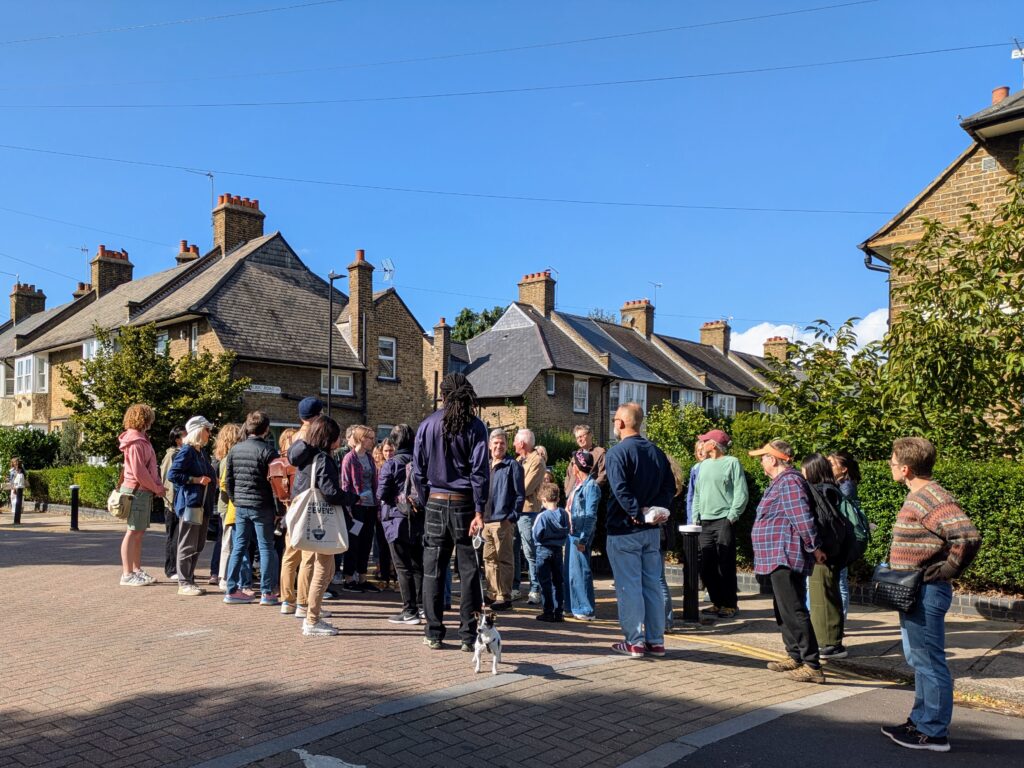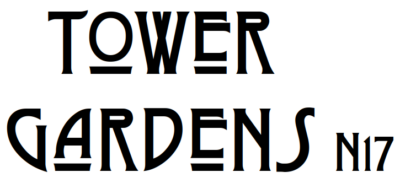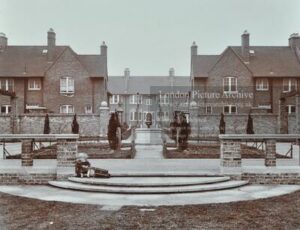History
At the turn of the century Tottenham was a village suburb served by new railways and at the end of the tramlines. It was surrounded by fields, which the newly formed London County Council (LCC) could acquire using as yet hardly used powers to buy land and build Council Housing.
The National Library of Scotland’s Map Finder includes maps of the area published in 1873, 1894, 1920 and 1946.
It is important to note that not everything that has been written about Tower Gardens is correct. The Wikipedia page has a list of reliable references. If you spot anything that is wrong in these pages, or have more information, do reach out!

Arts and Crafts influence
This new housing was designed by some of the most progressive Architects of their day and was funded by rich social reformers. The LCC placed Britain at the cutting edge of planned social housing, improving conditions for the working classes with well constructed, healthy homes in the highest quality environments. Given its history, the earliest part of Tower Gardens is a Conservation Area, and many streets are also covered by an Article 4 direction. See Conservation area page for more information.
Tower Gardens, originally called White Hart Lane Estate, was the largest development undertaken by the LCC between 1898 and 1914 (other large estates being construction in Tooting, Hammersmith and Croydon). It was the second cottage estate built by the LCC, after Totterdown Fields, but the first to be constructed outside of the LCC area, and became the foremost housing achievement of the early LCC.
The Wikipedia page has more information, and references.
Social history
A separate page has a detailed history of social activities and events on Tower Garden Estate.
Layers of London includes a number of records of First World War conscientious objectors who lived on the estate, including Alfred Edward Norman, 1 Awlfield Avenue.
A life in the day of a Tower Gardens resident: Charles Roberts page has the story of a longtime resident of Tower Gardens.
Open House London
Tower Gardens participates in the annual Open House London programme. We have a lovely architectural tour led by a local architect, as well as a self-led tour, and cake and tea we sell to raise money for charity.
Last year’s listing can be found here.

Resources: Online and offline
The London Picture Archive includes a large number of images of the White Hart Lane Estate, mostly from the 1920s, including the shops on Lordship Lane, Tower Gardens Park and many more.
The Courtauld Collection includes a number of photos of the White Hart Lane estate from the mid-Twentieth century.
Artist John Goddard painted a house on Tower Gardens Estate in 1969. See the last image on this page about his Haringey works.
Local Bruce Castle Museum, which houses the Haringey Archives, has a lot of material on Tower Gardens, including original plans, photos, and documents. It also has a copy of A. Quiney’s House and Home chapter “Cottages for All”, which covers the history of the estate in detail and gives lots of context, and a copy of D. Bligh’s thesis which extensively covers the social history of the estate.
This material was also used for the BBC “Cottages for All” episode that aired in 1986. This can be viewed in the BFI archives, in Tottenham Court Road, upon request and payment of a small fee. It talks about how important and novel Tower Gardens was at the time, and interviews some long time residents to understand how people used to live in the early days of the estate.
The London Archives also have a lot of material both on the LCC in general and on White Hart Lane Estate. This is a useful guide to get started with research at TLA.



